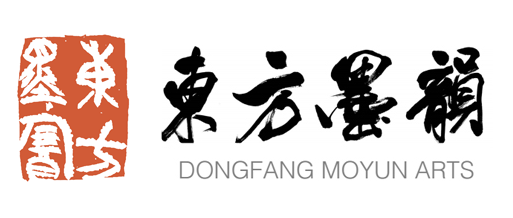博士论文《曾熙书法研究》概述
论文题目:《曾熙书法研究》
(中国人民大学2017年博士学位论文)
作者:王高升
指导教师:郑晓华 教授
一、中文摘要:
曾熙既是封建士人,又是清末民初最重要的碑学书家之一,与吴昌硕、康有为、沈曾植、李瑞清、郑孝胥等大家齐名。然而,时过境迁,曾熙已慢慢淡出人们的视野,其书法艺术的辉煌成就及其与清末民初海上书坛的碑学热潮的种种关联逐渐鲜被提及,成为一个“冷门”的书家,不仅研究者寥寥,甚至一般的书法学习者都鲜知其人。笔者认为,曾熙之所以少为今人关注,一是由于资料的缺失,二是研究的乏力。因此,笔者广泛搜集一手资料,通过整合分析,以期将一个立体、真实的书法大家曾熙呈现在大家面前。为了对曾熙书法进行系统的研究,本文主要从以下几个方面展开:
第一,本文从社会学视角切入,还原曾熙作为末代士人在晚清、民国交替之际的种种行踪及其心路历程,以揭示其走上职业鬻书之路的社会原因。沿着这条脉络,我们进而由外而内,追寻曾熙书法风格逐渐形成的社会、地理、文化等原因,尤其是“南曾北李”这个小团体的形成及其外围“书画圈”的构建对他艺术素质的培养和艺术理念的形成有着深刻影响。这些都是曾熙书法风格形成的重要原因。
第二,对曾熙书法创作的风格特点和观念进行系统而全面的阐述。在篆、隶、楷、行、草五体中,曾熙对篆隶书最为看重。因为在他的学书观念中,篆隶处于书体链条的顶端,尤其是商周金文的古篆笔法是其打通和统摄隶、楷、行、草其他各体的关键。笔者以作品为例,对曾熙的篆、隶、楷、行、草等书体进行逐一研究分析,并通过与同代书家的比较,揭示其独特的创作成就。值得一提的是,曾熙的小楷成就鲜为人知,本文特进行了深入挖掘。综合来看曾熙是清末民国时期为数不多的五体兼能且能以古篆笔法打通各体的创新型书家,其艺术成就不可小觑。
第三,在曾熙的书法创作中,我们可以发现其重要的笔法特征—“颤笔”无处不在。“颤笔”也是大众对曾熙书法特点的直观而模糊的认识。实际上,曾熙的“颤笔”与人们惯常思维中的“颤笔”并不等同,它源自三代的“古篆”笔法,却又被曾熙赋予了新的内涵,成为他改造碑学书风的利器。为了使“颤笔”的原理得以再现,本文运用了图像分析的方法,对“顿挫”“提转”两个区别而联系的笔法进行细致解读和阐释。我们得以通过“颤笔”这一笔法特征为切入点,更多地理解曾熙的书法创作与审美观念。
第四,曾熙的书法理论是我们全面认识曾熙书法艺术的关键一环。第二、三章更侧重于技法层面的剖析,本章则从书家论、书体论、风格论、审美论、创作论几个层面对曾熙的书法理论思想进行系统解读。通过这种解读,我们得以发现曾熙的理论和创作思想是高度统一的,也是其取得不凡成就的重要支柱。他的书法创作有“一以贯之”的笔法线索贯穿始终,其书法理论也有一个基本的理念统揽全局:书法学习应以“古”为宗,以“篆”为源,博取与笃守兼顾,功力深厚之时,方能成家。但要想达到“技进乎道”的崇高境界,还要融会碑帖,参悟刚柔,功力、天机和学养三者缺一不可。
第五,曾熙的创作和理论成就对其门人乃至整个近现代书法史都产生了深刻的影响。尤其是张大千等一批门人在曾熙的亲身垂范和悉心教育下成为书画界巨匠,“曾李同门会”的成立使曾熙、李瑞清书法的辐射范围得以扩大,至今仍有大批再传门人活跃于艺术家和学界,可谓薪火相传。此外,曾熙的创作和理论观念至今都有积极的借鉴意义。
综上所述,曾熙既是重要的碑学书家,也是一位五体兼能、碑帖兼通的“全能型”书家和文人型书家,其书法艺术的价值还远未被挖掘和全面认识。可以说,曾熙是清末民国时期名副其实的书法大家,其卓越的艺术创造力和全新的艺术观念值得我们继续追寻。
关键词:曾熙;书法;“南曾北李”;“颤笔”
二、英文摘要
Zeng Xi was not only one of feudal literati, but also one of the most important tablet calligraphy scholars in late Qing Dynasty and early Republic of China. He enjoyed equal reputation as masters like Wu Changshuo, Kang Youwei,Shen Zengzhi, Li Ruiqing and Zheng Xiaoxu etc.. However, as time passed by, Zeng Xi was gradually out of people's view. His glorious achievements on calligraphy and his connections with tablet calligraphy momentums during this period were barely mentioned, he became a byway calligrapher. From the author's point of view, the reasons why Zeng Xi is neglected by academic field are lacking of material and lacking of research. As a result, the author widely collected first-hand materials about Zeng Xi, by conducting integrated analysis to present a solid and true Zeng Xi who was a great calligrapher to the public. This dissertation give a comprehensive analysis on Zeng Xi's calligraphy from the following aspects:
First of all, from sociology perspective, restore Zeng Xi as last scholars, his various tracks and intention courses in the turn of late Qing dynasty and the republic of China, to reveal social reasons that made him to take the profession as a calligrapher.By following this sequence of thoughts, we track down the social, geographical and cultural reasons that shaped his style from external to internal level. Especially, the establishment of a community called Southern Zeng Northern Li and prephere Calligraphy Circle exerted a profound impact on the cultivation of his art quality and the form of theoretical ideas. All above played important roles to shaping Zeng Xi’s art style.
Secondly, a systematic and comprehensive elaboration on Zeng Xi's calligraphic characteristics and philosophies. Among seal script, clerical script, regular script, semi-cursive script and cursive script, Zeng Xi valued seal and clerical script the most, because in his calligraphic philosophy, these two scripts were in the top of chirography, especially the brushwork of ancient inscriptions from Shang and Zhou dynasties was the key for him to fully digest and integrate clerical, regular, semi-cursive, cursive and other scripts. The author will take his works as examples to analyzed each script of Zeng Xi, make a comparison with his peer calligraphers to reveal his unique achievements in calligraphic creation. What deserves to be mentioned is his attainments in small-character regular script which is barely known by people, this dissertation is also giving a deep exploration on this topic. Taken together, Zeng Xi was a innovative calligrapher reached mastery of five scripts with ancient clerical brushwork who was in negligible quantity in the late Qing Dynasty and early Republic of China. His artistic creation achievements are no less significant.
Thirdly, "vibrant brushwork" is the main feature of Zeng Xi's calligraphic creation which can be noticed in his work. " vibrant brushwork" also presents people's perceptual and vague understanding about him. Actually, his " vibrant brushwork" is different from its regular definition, it originated from " ancient clerical brushwork of Xia, Shang and Zhou Dynasties, endowed with fresh meanings by him, became an edged tool for him to transform table calligraphy. To represent the idea of " vibrant brushwork", by applying iconography to interpret and elaborate two closely connected but different brushworks called "pause and inflexion", " lifting and pressing" . The " vibrant brushwork" of Zeng Xi can be a start point for us to have a better understanding on his aesthetic ideas.
Fourthly, Zeng Xi's calligraphic theory is a crucial part for us to fully understand his calligraphy. The second and third chapter mainly focus on skill level analyzing, this chapter dedicated to a systematic interpretation of Zeng Xi's theories on calligrapher, chirography, stylistics, aesthetic and artistic creation. From the analysis we can find that Zeng Xi's artistic practices were highly aligned with his theories which is definitely one of the most important basis for his extraordinary achievements. Just like his calligraphic creation, his calligraphic theories are also centered by a foundational idea: " ancient essence " should be the principle of calligraphic learning, should be originated from "clerical script", simultaneously embrace all and keep the original belief, when you have a solid accumulation, you could be a master, but a person cannot reach the most lofty level " skill progression enable one have the essence of Tao" until you managed to integrate tablet calligraphy and calligraphy copies, epiphany and hardness and softness, the mastery of nature, and cultivation, one can be dispensed with.
Fifth,Zeng Xi's achievements in artistic creation and theories deeply impacted his apprentices and modern calligraphy history. Especially Zhang Daqian and his peers, they became renowned masters in calligraphy and painting with the instruction and demonstration of Zeng Xi. The establishment of " Apprentices Union of Zeng&Li " expanded Zeng Xi and LI Ruiqing's scope of influence in terms of calligraphy. Nowadays. A large group of students of their disciples are active in academic world, it has been passed by from generations to generations. What's more, Zeng Xi's artistic creation and theories is actively referenced by other people.
Above all, Zeng Xi was not only an important tablet calligrapher, but also a versatile calligrapher that has a mastery of five chirographies and comprehensively understand tablet calligraphy and Tie School. And he was a literary calligrapher that has been neglected for a longtime, so his value has not been complete dig and lacking of comprehensive understanding. We ca tell Zeng Xi was a calligraphic master in his time, and his extraordinary art creative ability and his brand new art theories deserve deeper exploration in nowadays.
Key words: Zeng Xi;Calligraphy;“Southern Zeng and Northern Li”; “vibrant brushwork”

